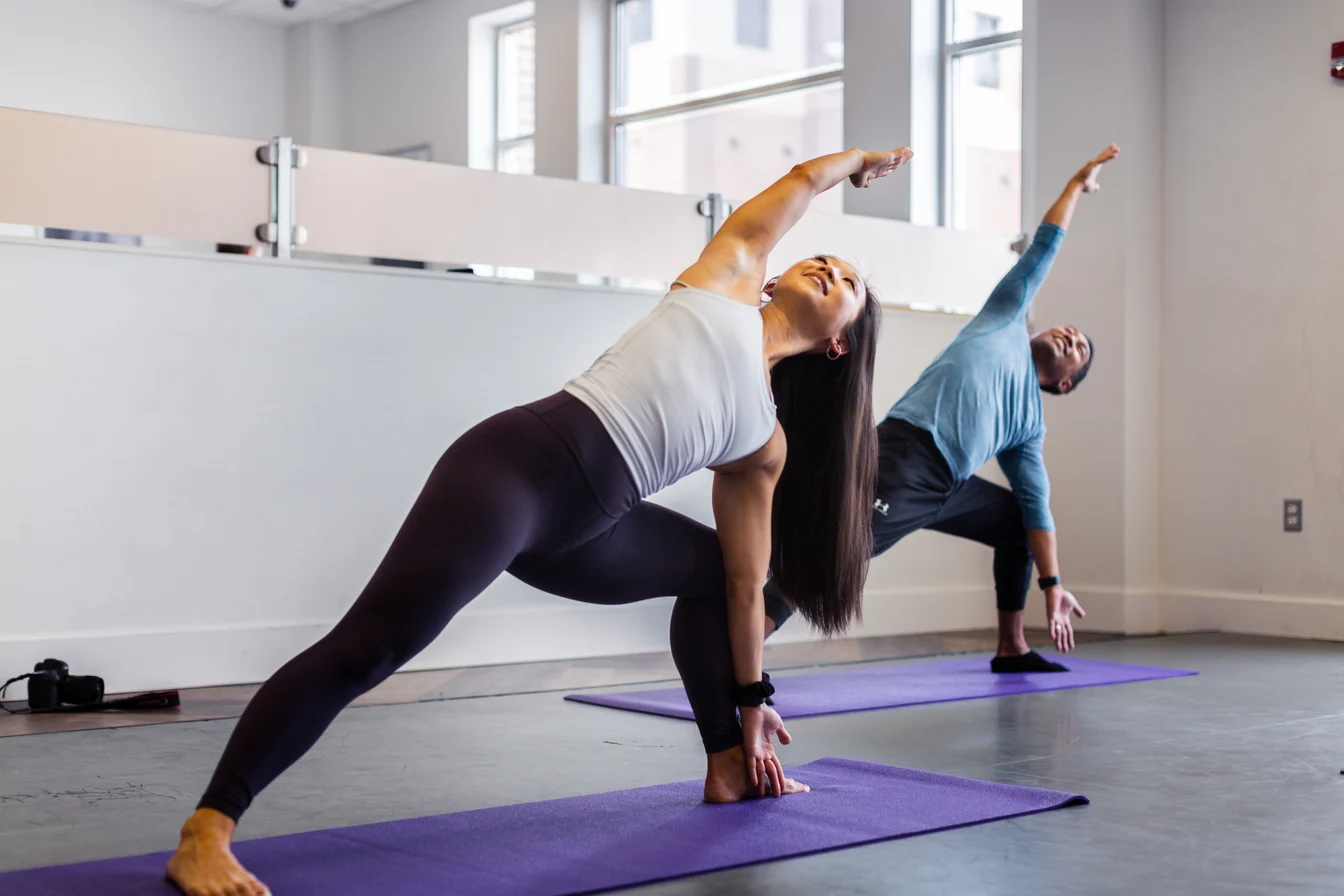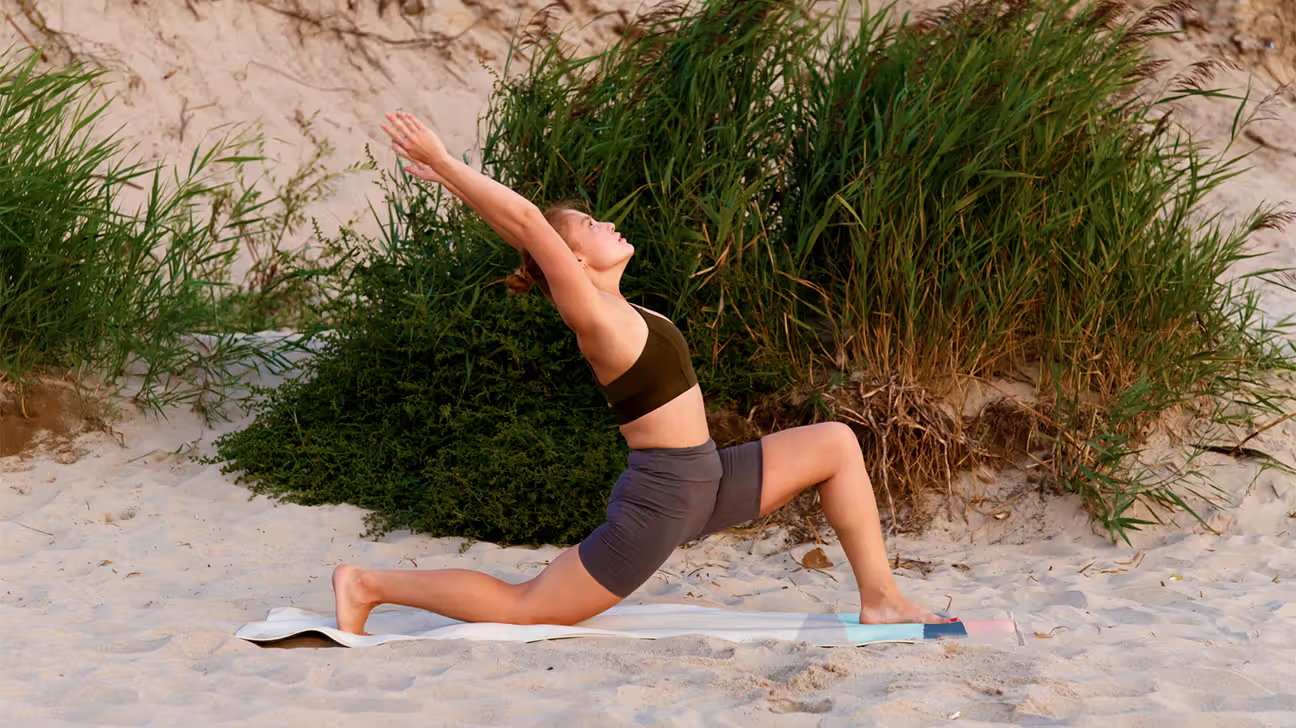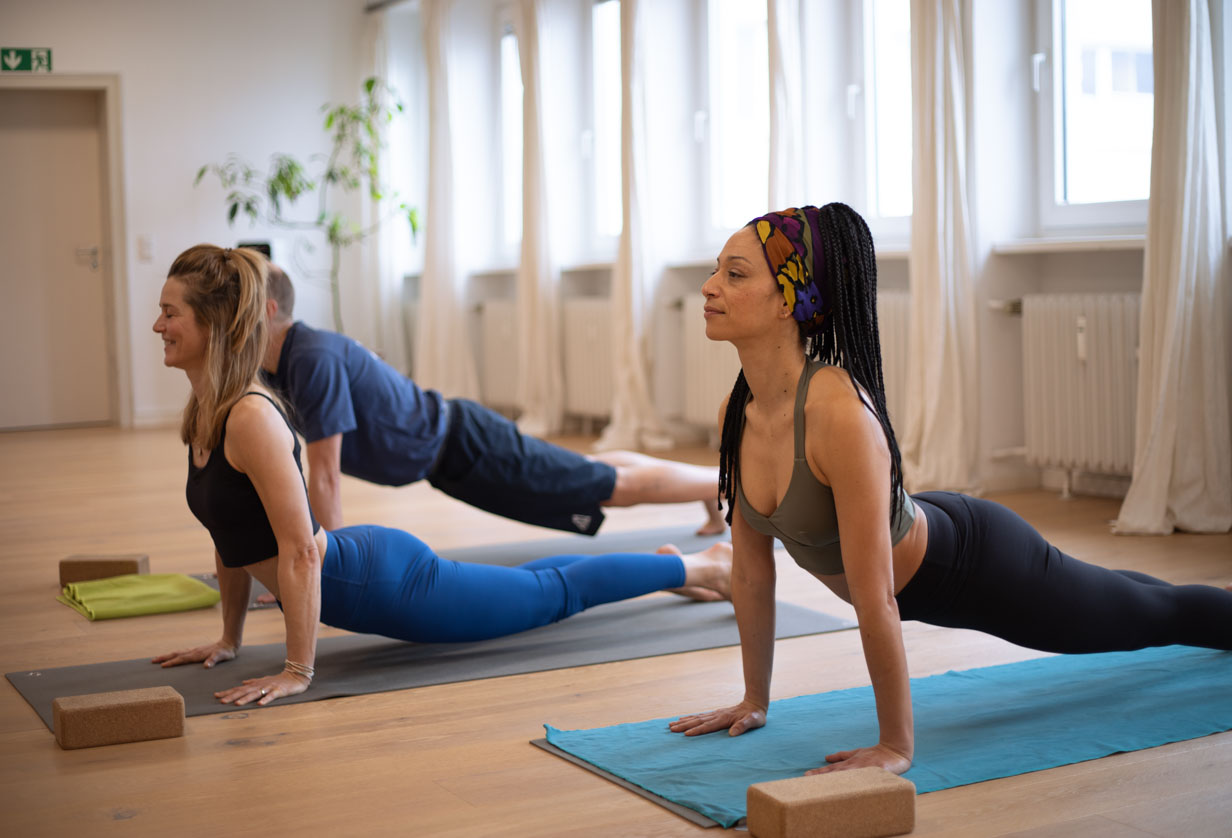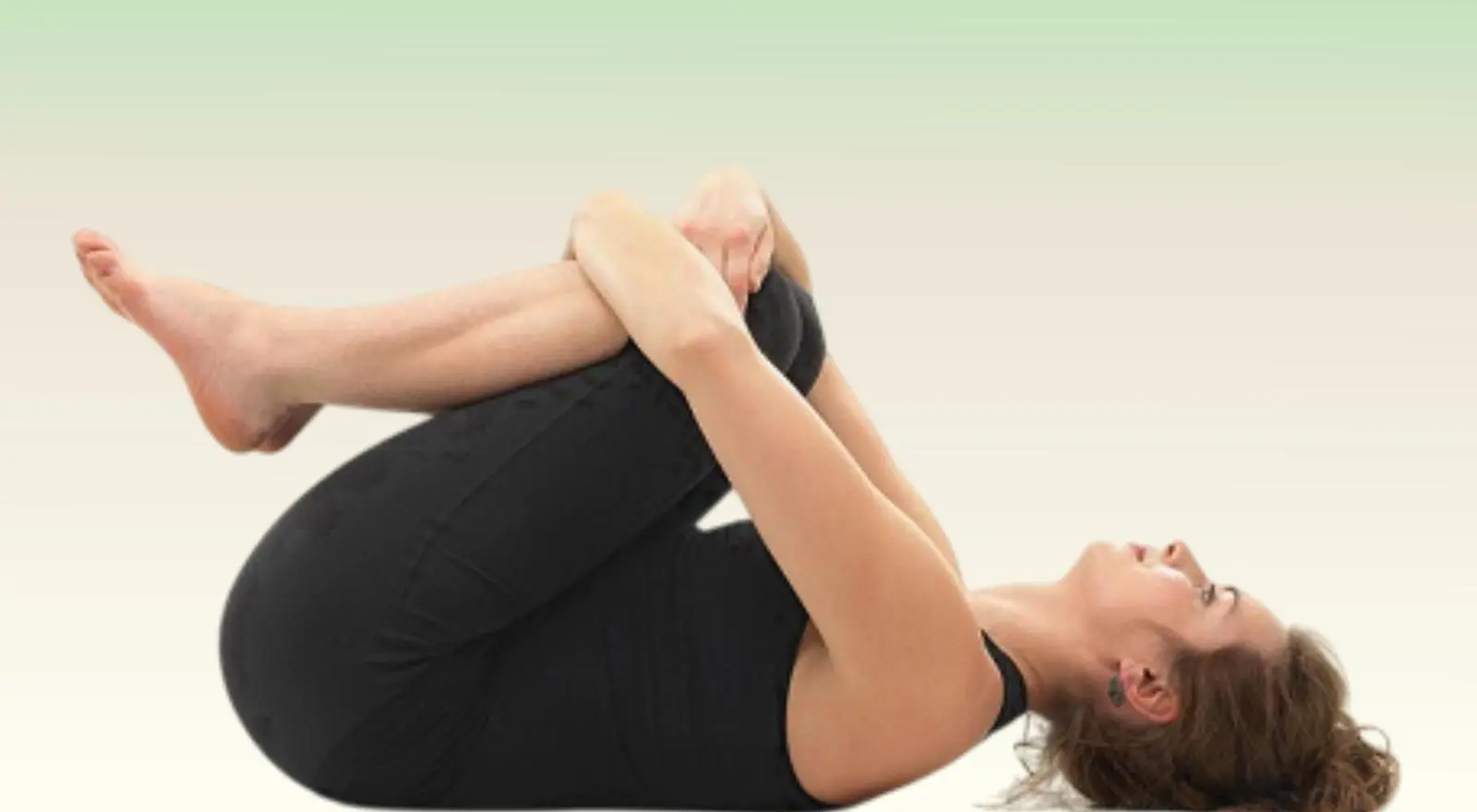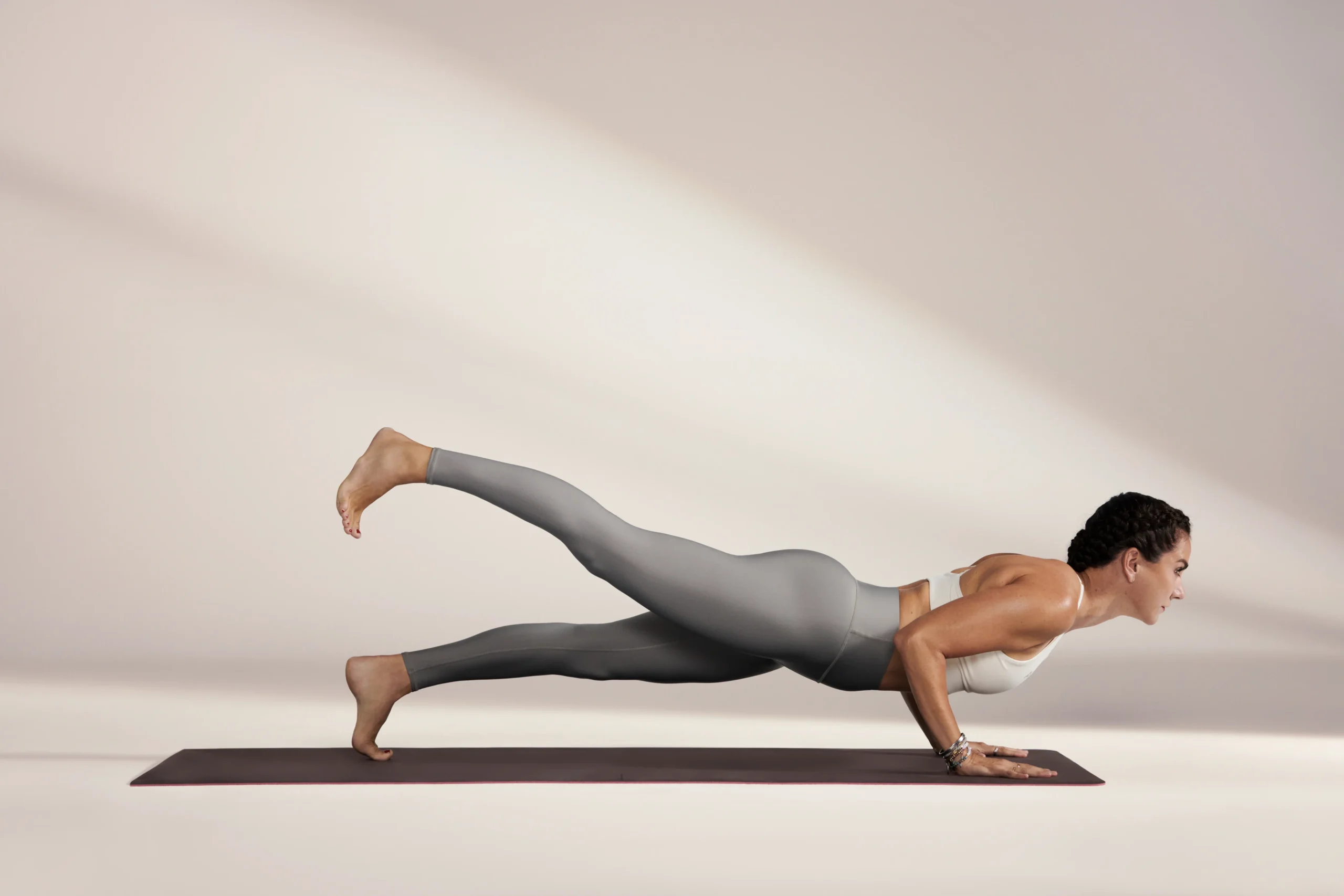Hey there, picture this: It’s a crisp Saturday morning, and I’m rolling out my mat in my living room, the sun peeking through the blinds like it’s cheering me on. I take a deep breath, feeling that familiar buzz of anticipation. Power yoga isn’t just exercise for me—it’s that jolt of energy that turns a groggy weekend into something electric. If you’ve ever wondered what makes this dynamic twist on traditional yoga so addictive, stick with me. We’ll dive into its roots, unpack the real-deal benefits backed by science and stories, and get you set up to flow. Trust me, by the end, you’ll be itching to strike a pose.
What Is Power Yoga?
Power yoga is like the high-octane remix of classic yoga—think Vinyasa flows cranked up with strength-building holds and cardio bursts that leave you sweaty and satisfied. Born in the ’90s from Ashtanga roots, it ditches rigid sequences for creative, teacher-led flows that sync breath with movement, making every class feel fresh yet challenging. It’s not about chanting in lotus for hours; it’s a full-body party that builds heat from the inside out.
I remember my first power yoga class back in college—heart pounding through warrior poses, wondering if I’d survive the chaturangas. Spoiler: I did, and it hooked me because it felt less like a workout and more like unleashing something wild within.
This style emphasizes endurance and power, often in a heated room to amp up detox and flexibility, but you can start anywhere. It’s accessible yet intense, perfect for anyone craving movement that hits mind, body, and soul.
The Physical Benefits of Power Yoga
Power yoga doesn’t mess around when it comes to sculpting your physique—it’s a sneaky way to torch calories while toning every inch. Research shows it spikes your heart rate into cardio territory, blending resistance with flow for a hybrid workout that rivals the gym. You’ll feel stronger, more agile, and oddly empowered, like your body’s whispering, “Yeah, I got this.”
From boosting stamina to easing back pain, the gains stack up fast. One study even linked twice-weekly sessions to better muscle power in folks with Parkinson’s—talk about transformative.
And let’s not forget the glow: improved circulation means clearer skin and that post-class strut where you feel unbreakable.
Building Strength and Muscle Tone
Those long holds in poses like plank or crow? They’re gold for forging lean muscle without the bulk. Power yoga engages your core, arms, and legs in ways that sneaky-build endurance, turning “I can’t” into “Watch me.” It’s like resistance training with a zen twist—no weights needed.
I once challenged a buddy to 30 days of power yoga; by week three, he was deadlifting his desk chair like it was nothing. Science backs it: dynamic flows increase upper body and trunk strength significantly.
Over time, this translates to better posture and injury-proofing, so you move through life with ease.
Enhancing Flexibility and Balance
Ever tried touching your toes and felt like a rusty hinge? Power yoga’s fluid transitions stretch you out gently but firmly, unlocking hips and hamstrings while sharpening balance through tree pose wobbles. It’s not just bendy—it’s functional, helping you chase kids or hike trails without a hitch.
A light-hearted fail: My early attempts at half-moon had me flailing like a tipsy flamingo, but persistence paid off. Studies show consistent practice boosts range of motion and stability, reducing fall risks as we age.
The emotional win? That rush of confidence when you nail a pose—pure magic.
Boosting Cardiovascular Health
Power yoga’s quick pace turns flows into a heart-pumping session, lowering blood pressure and slashing BMI with regular hits. It’s cardio disguised as calm, burning up to 237 calories in 50 minutes—hello, guilt-free coffee afterward.
One pilot study on firefighters found diastolic drops and endurance jumps after just six weeks. My own heart rate monitor doesn’t lie; classes leave me energized, not exhausted.
Pair it with breathwork, and you’ve got a recipe for sustained vitality that ripples into daily hustle.
Mental and Emotional Benefits
Beyond the sweat, power yoga rewires your brain for calm amid chaos. It dials down cortisol, that sneaky stress hormone, fostering a “I’ve got this” mindset that spills into work deadlines and family dinners. It’s therapy on a mat—affordable and endorphin-fueled.
Studies link it to sharper focus and mood lifts, with one showing reduced anxiety after a single session. For me, it’s the ultimate reset button.
Who knew downward dog could double as a daily dose of joy?
Reducing Stress and Anxiety
In a world that’s basically a non-stop ping-pong of notifications, power yoga’s breath-movement sync acts like a mute button on anxiety. Research confirms it slashes cortisol, easing tension and promoting deeper sleep. Flowing through poses quiets the mental chatter, leaving you lighter.
I laugh now recalling my pre-yoga freak-outs over emails; now, a quick warrior sequence grounds me. Trials with PTSD patients saw symptom drops after weekly classes—proof it’s no fluff.
It’s that gentle hug from within, turning “overwhelmed” into “over it.”
Improving Focus and Mental Clarity
Power yoga sharpens your edge like a mental whetstone—those focused holds train your brain to stay present, boosting concentration off the mat too. Neuroimaging shows tweaks in brain areas tied to attention, making multitasking feel less like herding cats.
A girlfriend swore by it for acing exams; I use it to zone into writing without distractions. One study on older adults noted better memory perception post-practice.
Suddenly, foggy days clear, and decisions flow easier.
Elevating Mood and Emotional Resilience
Ever finish a class feeling like you could high-five the world? That’s the endorphin-endgame, plus GABA boosts that fend off the blues. It builds resilience, turning setbacks into setups for comebacks.
During a rough patch last year, power yoga was my anchor—flows turned tears into triumphs. Evidence from depression studies shows mood gains rivaling meds, minus side effects.
It’s emotional armor, wrapped in a feel-good glow.
Power Yoga vs. Traditional Yoga: A Quick Comparison
Power yoga amps the intensity over traditional styles, trading slow serenity for sweaty flows that pack a punch. While Hatha lingers on alignment for calm, power’s Vinyasa roots crank the cardio, making it a fitness fave. Both heal, but power energizes.
My switch from gentle Hatha to power was like upgrading from a nap to a nap with fireworks—more thrill, same zen payoff.
Here’s a side-by-side to see the vibe:
| Aspect | Power Yoga | Traditional Yoga (e.g., Hatha) |
|---|---|---|
| Pace | Fast-flowing, dynamic | Slow, deliberate holds |
| Focus | Strength, endurance, cardio | Alignment, relaxation, breath |
| Calorie Burn (50 min) | ~237 calories | ~144 calories |
| Best For | Building power, stress-bust | Deep restoration, beginners |
| Intensity Level | High (sweat city) | Low-moderate (chill vibes) |
Data pulled from fitness trackers and studies—power edges out for metabolic boosts.
Choose based on your mood: power for fire, traditional for flow.
Pros and Cons of Power Yoga
Power yoga’s a powerhouse, but like any jam, it’s not for every playlist. Here’s the real talk:
Pros:
- Full-Body Torch: Blends cardio and strength for efficient gains—perfect for busy bees.
- Mind Reset: Slashes stress hormones, leaving you zen and zesty.
- Adaptable Fun: Endless sequences keep it fresh, no boredom blues.
- Holistic Wins: Boosts immunity and sleep, per wellness research.
Cons:
- Injury Risk: Fast pace can strain if you’re new—ease in, folks.
- Not for All: Skip if joints scream or you’re post-surgery; consult docs.
- Sweat Factor: Hot rooms? Bring towels—or embrace the drench (I do).
- Time Commitment: Flows demand focus; no half-hearted hangs.
Weigh ’em, then leap—I’ve never regretted the sweat.
Getting Started with Power Yoga: Tips for Beginners
Diving into power yoga? Start slow, breathe deep, and laugh off the wobbles—it’s your journey. Grab a grippy mat, comfy gear, and an open heart; no fancy setup needed. Aim for 20-minute sessions thrice weekly to build without burnout.
My newbie hack: Film yourself to tweak form—turns “oops” into “aha.” Hydrate like it’s your job, especially in heat.
Where to find classes? Online gems like PowerYoga.com offer Bryan Kest’s flows—gold for solos—or hit studios via Yoga Alliance for in-person vibes. For transactional ease, apps like Peloton or Alo Moves have on-demand power sessions starting at $13/month—best tools for home warriors.
Pro Tip: Pair with a journal to track mood shifts—it’s eye-opening.
Essential Beginner Poses to Master
Nail these foundations before flows:
- Downward Dog: Inverts for full-body stretch—pedal heels for fun.
- Warrior II: Builds legs and focus; gaze fierce over front hand.
- Plank: Core crusher—drop knees if quads quake.
Hold 5 breaths each, flow gently. Per experts, these build the base for dynamic magic.
Common Mistakes to Avoid
Rushing transitions? Big no—sync breath to dodge tweaks. Ego-lifting poses leads to strains; modify with props.
Forgetting savasana? It’s the cherry—skip and miss the recharge. Hydrate pre/post, and listen to your body—it’s the boss.
People Also Ask
Ever Googled power yoga and spiraled into questions? Here’s the scoop on top curiosities, pulled straight from search vibes.
Is power yoga good for beginners?
Absolutely, if you start gentle—modified flows build strength without overwhelm. Opt for 20-minute intros; studies show even newbies gain flexibility fast. Just breathe through it.
What’s the difference between yoga and power yoga?
Traditional yoga leans restorative and meditative, while power cranks the athleticism with faster flows and holds for cardio-strength hybrids. Power burns more calories but both zen out stress.
Does power yoga help you lose weight?
Yep—its calorie scorch (200+ per session) plus muscle build revs metabolism. Pair with eats for best results; one study saw BMI dips in a month.
How often should I do power yoga?
Three to five times weekly hits sweet spot for gains without fatigue—listen to recovery cues. Beginners? Twice, ramp up.
Can power yoga be done at home?
Totally—apps and free vids make it easy. Ensure space and mirror for form checks; it’s empowering solo.
FAQ
Got lingering queries? These cover real-user wonders, answered with heart and facts.
How soon do I see power yoga benefits?
Quick wins like stress dips hit after one class, per cortisol studies. Strength and flex? Two to four weeks of consistency. Patience pays.
Is power yoga safe for bad knees?
Modifications make it doable—use props, skip deep lunges. Consult pros; research shows joint-friendly tweaks work wonders.
What’s the best gear for power yoga?
Grippy mat, moisture-wicking clothes, blocks for support. Budget pick: Manduka mat—lasts forever.
Can power yoga replace running?
It matches cardio perks with less joint pound, but mix for variety. Endurance builds similarly, sans boredom.
How does power yoga affect sleep?
Beautifully—post-flow relaxation hormones kick in, deepening rest. Evening sessions? Wind down gently.
There you have it—power yoga’s dynamic magic, ready to ignite your world. Remember that first flow I mentioned? It’s been years of transformations since, from tighter jeans to calmer crises. What’s holding you back? Roll out, breathe in, and let the power unfold. You’ve got this—now go claim it.
